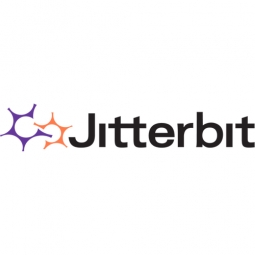Download PDF

Jitterbit
Overview
HQ Location
United States
Year Founded
2004
Company Type
Private
Revenue
$10-100m
Employees
201 - 1,000
Website
Company Description
Jitterbit helps businesses make faster, more effective decisions by enabling them to unify and exploit data from all sources.
Using the Jitterbit API integration platform companies can rapidly connect SaaS, On-Premises and cloud applications and instantly infuse Artificial Intelligence into any business process. Our intuitive API creation technology enables companies to reuse business-critical applications and data to bring new offerings to market in days, not months. Best of all, our team of industry experts work side by side with you to accelerate innovation beyond anything you previously thought possible
IoT Snapshot
Jitterbit is a provider of Industrial IoT application infrastructure and middleware technologies.
Technology Stack
Jitterbit’s Technology Stack maps Jitterbit’s participation in the application infrastructure and middleware IoT Technology stack.
-
Devices Layer
-
Edge Layer
-
Cloud Layer
-
Application Layer
-
Supporting Technologies
Technological Capability:
None
Minor
Moderate
Strong
Case Studies.
Case Study
Streamlined Invoicing and Well-Informed Technicians Improve Customer Service
SPP Pumps had a completely manual processes to manage and schedule more than 60 field service calls a day for their 30+ field engineers. The invoice generation process took up to 14 days to complete, typically. It involved paper forms; signed and then faxed back to the office. Administrative staff had to manually enter work order information into SAP before an invoice could be generated and sent to the customer for payment. There was no guarantee that what was faxed and entered was accurate or complete.
Case Study
SPP Pumps Case Study
SPP Pumps had a completely manual process to manage and schedule more than 60 field service calls a day for their 30 field engineers. The mechanism of generating an invoice from the field could take up to 14 days to complete. Service engineers filled out paper forms, signed them, and then faxed the forms back to the head office for each service call. Their administrative staff then had to manually enter work order information into SAP before an invoice could be generated. This manual system of filling out paper forms was time-consuming, resulted in many errors, and created cash flow problems for the company. This paper base system also siloed service engineers from the sales teams and the supply chain hindering communication. Often service engineers would show up to sites without the correct parts or leave without being able to identify to the sales team potential business at the customer sites.
Case Study
State of Iowa Case Study
The State of Iowa's Department of Administrative Services (DAS) was tasked with maintaining a database of debtors within a vendor-offset program. This required the integration of data from both inside and outside the state's network. In 2007, legislation was passed allowing county and city agencies to add their debtors to the database, leveraging the state's data processing power to secure payments of locally oriented debts. This new program required the database to pull information from dozens of different file types. The challenge was that thousands of files from local agencies were inundating the database with incomplete files and mismatched data.





